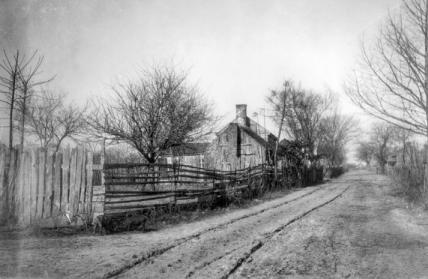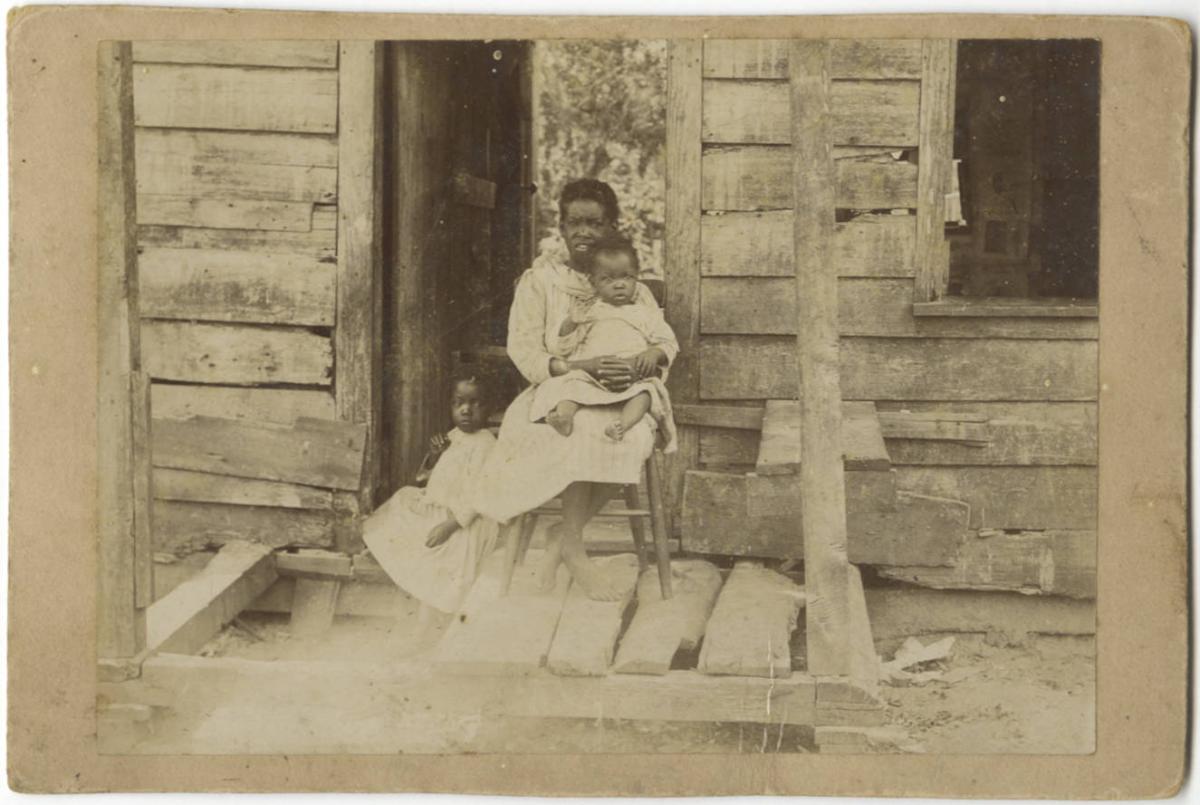
James City in Craven County evolved during the Civil War and Reconstruction years as an independent community of Black and African American North Carolinians, most of whom had been formerly enslaved.
In 1862, Union forces captured New Bern and other towns along the North Carolina coast. While Union troops occupied New Bern, recently freed people with no other housing or settlement opportunities filled the town, making it the largest refuge in North Carolina for Black men and women. Some formerly enslaved people joined the U.S. Army, but many others hoped to establish homes and farms of their own in the area. Army officials established a settlement for the refugees along the Trent River, which lay just outside of New Bern. To accommodate so many recently freed people, army officials chose to construct the settlement on confiscated lands formerly belonging to Peter G. Evans, a Confederate colonel and wealthy enslaver. The settlement, known at first as the Trent River Settlement, contained 800 houses. By 1865 nearly 3,000 Black people lived in the settlement, which was renamed James City in honor of its founder, Horace James, Superintendent of Negro Affairs and agent for the Bureau of Freedmen, Refugees, and Abandoned Lands.
The settlement gained township status during the Reconstruction era. Teachers from the American Missionary Association and the New England Freedmen's Aid Society established schools in James City, the Freedmen's Bureau established a hospital, and residents built churches, farmed land, and embarked upon business ventures. Many residents deposited their savings in a local branch of the Freedman's Savings and Trust Company. In 1865 James City residents selected delegates such as Joseph Green to represent them at state conventions and appeal for male voting and homestead rights. Soon after the war ended, James City grew from a settlement supported by military aid to a thriving and independent community. Many Black men and women preferred to live in James City rather than work for plantation owners -- many of whom had been enslavers -- in the countryside.
Conditions deteriorated the late 1860s as James City encountered challenge after challenge. One year, heavy rains and flooding damaged crops and led to poor harvests and destruction. The following year, a drought led to poor crop yield. The Freedmen's Bureau dramatically reduced their aid to city and its residents. Sanitary conditions declined. Then, in 1867, the federal government gave full ownership of the land that comprised James City -- and thus the James City Settlement -- to the family of Peter G. Evans. Residents were suddenly forced to pay rent to the white owners, work as sharecroppers, or leave the settlement. Freed people who once kept the profits their entire crop now had to make do with only one-third of the proceeds from harvests, as they were required to pay two-thirds for use of the land. As a result of their new circumstances, residents of James City faced encroaching poverty and many left the town.

By the 1880s, the population had dwindled to 1,100, and women outnumbered men three-to-two. Most residents farmed, fished, or worked as laborers and domestics. Though the city's population had decreased, James City's men and women formed a tenacious community that protected itself from white supremacy and the whims of employers and landlords. Religious denominations such as the African Methodist Episcopal Zion Church provided for social and religious needs, and in 1881 James City laborers went on strike to protest low wages and unfair prices. That same year, residents amassed $2,000 and offered to buy James City from its new owners, Mary and James A. Bryan. The Bryans refused to sell.
In the 1880s and 1890s, the Bryan family embarked upon a bitter campaign to increase rents with the intent to evict tenants from James City. Many residents argued that they had never paid rent. Others demanded compensation for improvements they had made, such as homes they had built and land they worked to make suitable for farming. James Bryan refused to negotiate, and in 1892 the matter landed before the North Carolina Supreme Court, which ruled in favor of Bryan and his wife. Some tenants bought tracts of land in nearby Graysville, Meadowsville, Brownsville, or Leesville, where they established a community and named it the "new" James City. Bryan continued to rent the land in old James City to lumber companies and Black women and men who refused to move.
At the opening of the twentieth century, James City had about 700 residents who owned or rented property and possessed a strong sense of heritage. When World War II created an increase of jobs in industrial areas, more residents left James City.
James City's proximity to the Neuse and Trent Rivers has led to challenges for its citizens that continue into modern times, as the town is one of several historically Black communities in Eastern North Carolina that are impacted by changing weather patterns, diminishing water quality, and byproducts of animal agriculture. James City is prone to flooding, and in 2018, Hurricane Florence flooded James City and New Bern under as much as seven feet of water. Furthermore, as pork agriculture is a large industry in eastern North Carolina, large amounts of animal waste -- stored in "lagoons", or giant pools of water -- can contaminate water tables and diminish air quality, harming people who are exposed to these conditions long-term. During flooding, this agricultural waste from the lagoons can contaminate other water sources, compounding the dangers and damage of flooding. Activists in James City and other communities in are working to protect their towns from further environmental damages from industries and climate threats.
Organizations such as Jones Chapel AME Zion Church and the James City Historical Society seek to preserve James City's history and tradition.